Welcome back to the In-App Purchase Inspector - our regular look at free-to-play games from the consumer's perspective.
In each instalment, we consider the incentives or pressure applied to make in-app purchases, their perceived value, the expansion offered by IAPs and the overall value of the experience.
The end goal is to see whether the game makes a good enough case for us to part with our cash, or whether players are content - or engaged enough - to 'freeload'
This time, we're taking a look at Dawn of Steel, a mecha-flavoured RTS which is published by German outfit Flaregames, but developed by US startup Superweapon.
Hands-on
This series has dealt with a number of strategy games - including Rival Kingdoms, Siegefall, and Age of Empires: Castle Siege - and, by definition, they'd all be classified as real-time strategy titles.
So when Dawn of Steel came similarly billed, I thought it would be of that ilk. However, Superweapon's effort feels incredibly different to any of the above titles due to a few key changes.
Of course, the now-standard base construction and attacking loops remain. However, what changes is the nature of your attacks.
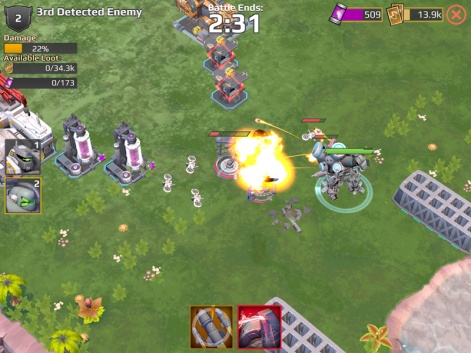
In Dawn of Steel, rather than presiding over an enormous army made up of tiny clusters of even tinier units, you direct much smaller numbers of up to three larger units - specifically, hulking metallic behemoths.
As such, you feel a far greater level of control over your individual units rather than deploying a pack of archers only to see them run around directionlessly pinging their arrows like headless chickens.
Your mechs automatically attack enemies, but tapping to move, timing your units' individual special attacks, and a tighter camera angle all contribute to an experience that feels more action-heavy and controlled than your average mobile strategy game.
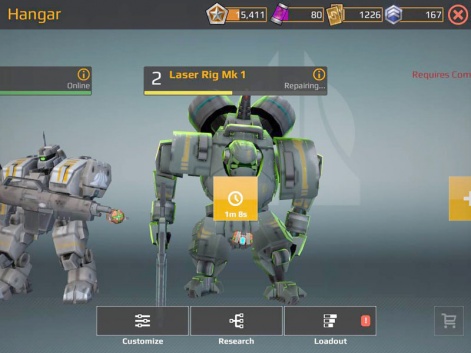
It feels like you're more involved, too. In games like those mentioned above, it often feels as though a below-par army will result in failure 100 percent of the time, regardless of how sound your tactics are.
Dawn of Steel provides a fresh new gameplay experience for mobile strategy fans.
And while that's not necessarily a bad thing, the more action-heavy approach of Dawn of Steel makes even the harshest odds feel a little more surmountable with smart play.
You can pick up health items in the midst of battle, take cover behind walls, and you're rewarded for such on-the-fly tactics in a way that rarely happens in other strategy games.
More money more mechs
Dawn of Steel is far from light on monetisation, though. And with four currencies - Battle Points, Credits, Plasma, and Influence - some might be scared off straight away.
However, things are nowhere near as bad as this suggests. Of these, Influence is the only hard currency, coming in packs ranging from 500 for $4.99 to 14,000 for $99.99.
It's also interesting to note from a UI perspective that Dawn of Steel reverses the established order of things by having the Influence store scroll from highest value IAP available to lowest value, left to right.
This means that the $99.99, $49.99, and $29.99 tiers are presented front-and-centre, and the player actually has to scroll to display the more affordable tiers.
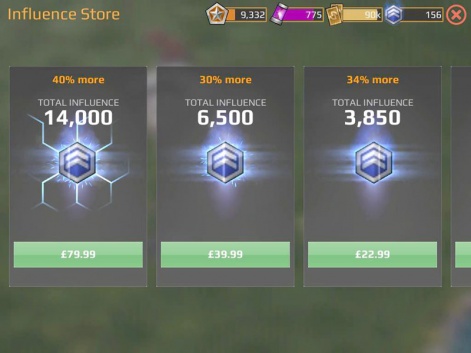
Indeed, Flaregames has stated this was a thought-through and tested decision, which will increase the average transaction made in the game, albeit at the cost of the number of transactions.
The other three are soft currencies. Plasma and Credits are both accumulated over time by resource structures in your base, much like gold in other strategy games, while Battle Points are earned solely - you guessed it - in battle.
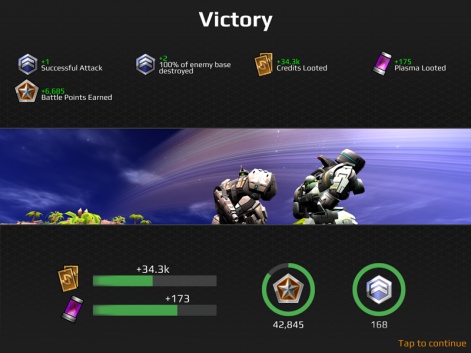
And as in any strategy game, the majority of your currencies will be spent on upgrading or adding to both your base and your units.
But upgrades and purchases often cost Plasma and Credits, meaning you have to maintain a healthy stash of both those currencies if you want to progress without paying real money - and accruing sufficient amounts can be time-consuming.
Limited influence
Dawn of Steel is guarded with its hard currency, too, starting you out with around 100 Influence (worth approximately $1). Influence comes into play for purchasing some exclusive weapons, buying missing resources, and skipping wait timers.
It hardly flows thick and fast either, with the maximum yield from a standard battle ordinarily 3 Influence - 1 for success and 2 for overall destruction of the enemy base - along with minimal objective rewards.
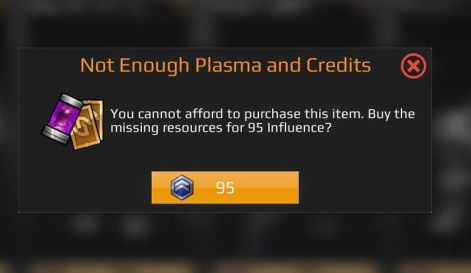
Indeed, with Influence offering little in the way of exclusive content, purchasing IAPs becomes little more than an expensive shortcut. And while I only purchased at the $4.99 tier, I was still surprised at how quickly I burned through 500 Influence.
Between buying the necessary resources for an additional mech - a Dash Rig Mk 2 - and skipping a handful of wait timers, I was back to where I started.
Building certain structures is gated based on your command rank, which in turn is defined by the standard of your camp. This means that real progress - signified, as always, by the number next to your name getting higher - is always just painfully distant beyond a wait timer.
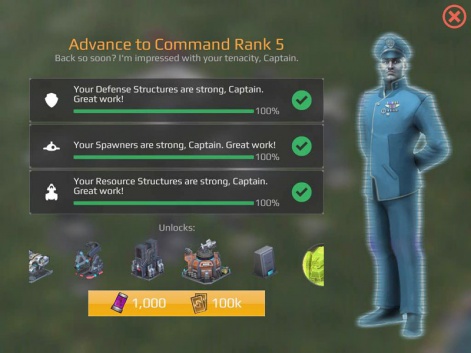
However, the ultimate cruelty lies unto the system by which you have to spend Credits and Plasma in order to level up, even if you've completed all the prerequisite improvements to your base.
The ultimate cruelty lies in the system by which you have to spend Credits and Plasma in order to level up.
Imagine excitedly spending the last of your resources to get your base up to scratch, before realising you have to go out and earn more to level up. This somehow happened to me every single time, and it's a soul-destroying moment that's enough to have anyone reaching for the hard currency.
Battle-hardened
However, the process of waging war in Dawn of Steel is so entertaining that you won't mind doing it again and again - which is handy, because you'll be doing so a lot if you're looking to freeload.
But while wait timers are frequent - as well as being quite expensive to skip - there's no energy system to outright stop you playing, bar a (very) small Credit cost to initiate battles.
Add in the Battle Coins, which can only be earned through getting stuck in and in turn can be spent on weapons and abilities for your mechs, this is a game that just really encourages you to play.
And, if you're patient, pretty much all the necessary ingredients for steady progression - namely Credits and Plasma, the two currencies you'll deal in most frequently - are fed in pretty generous quantities through standard play.
So forgive it its monetisation, and you'll find Dawn of Steel provides a fresh new gameplay experience for mobile strategy fans.






















